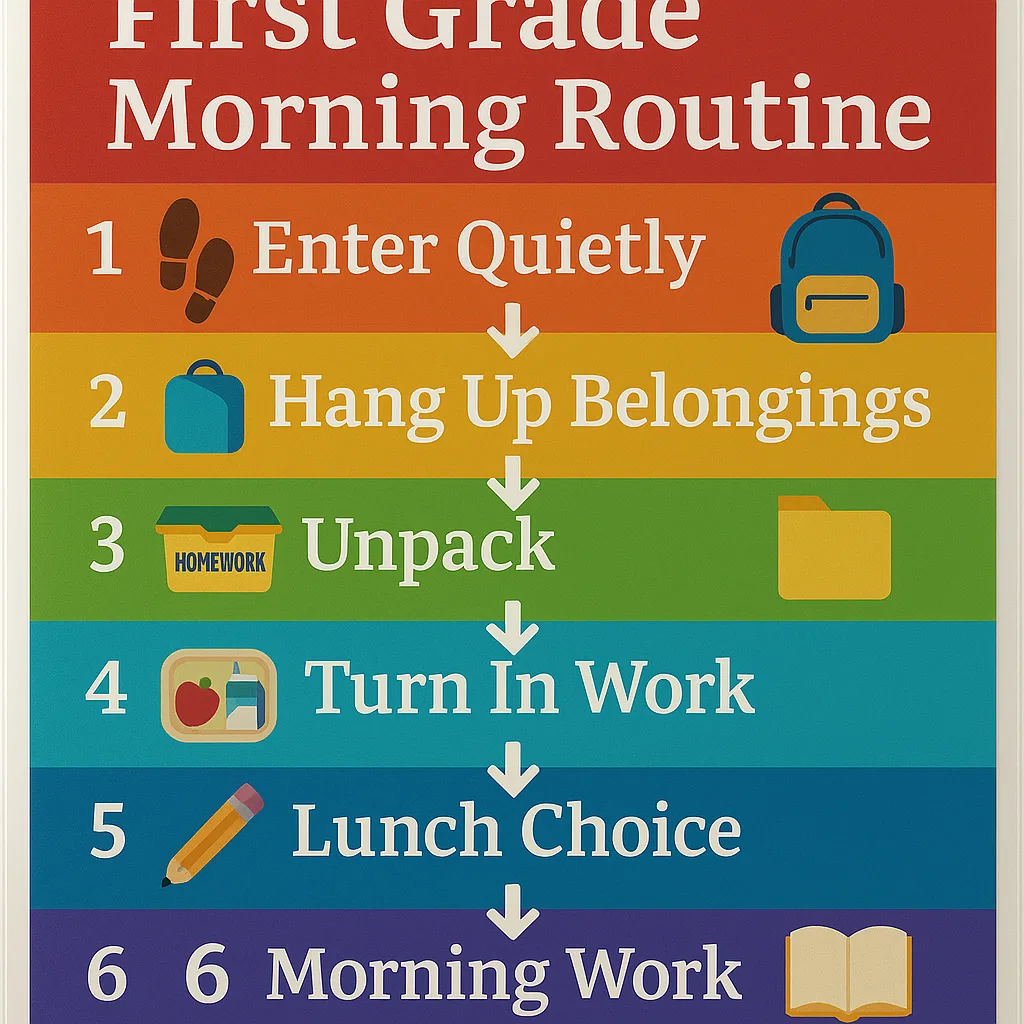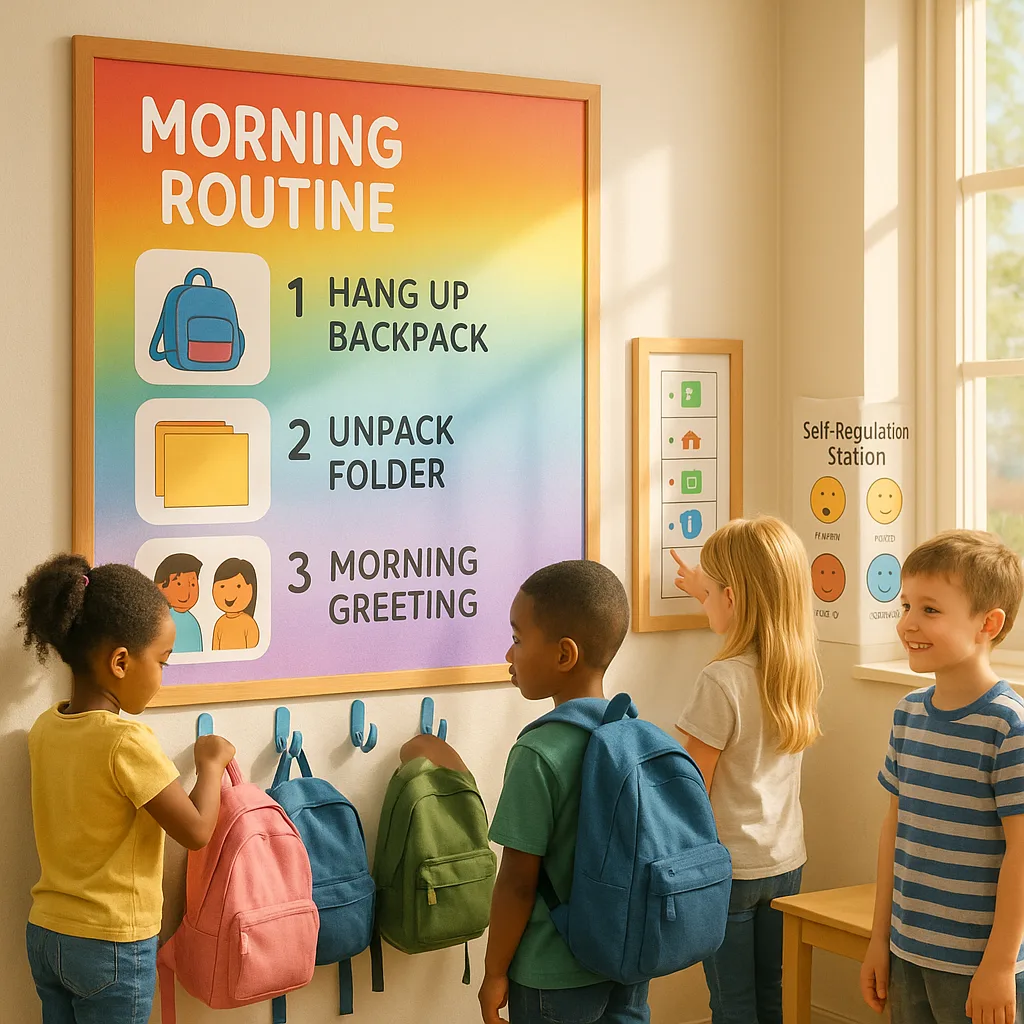Poster Machines for Morning Classroom Transitions
Why Visual Transitions Matter for Young Learners
Let me share something that surprised me during my first few months of teaching. Young children don’t naturally know how to transition from “home mode” to “school mode.” They need explicit guidance, and visual cues work like magic for six and seven-year-olds who are still developing their reading skills.
Research shows that predictable routines reduce anxiety and help children feel secure. When I started using colorful morning routine posters created with our poster printer for schools, I noticed immediate changes. Students who used to wander aimlessly now had a clear visual roadmap. Parents commented that their children were more excited about coming to school because they knew exactly what to expect.
The beauty of visual transition tools is that they speak a universal language. Whether you have English language learners, students with special needs, or simply tired first graders who need extra support, pictures communicate instantly what might take paragraphs to explain.

Designing Effective Morning Routine Posters
After lots of trial and error (and a few poster redesigns!), I’ve learned what makes morning routine visuals truly effective for first graders. The key is balancing simplicity with engagement.
First, use real photographs whenever possible. While cartoon images are cute, actual photos of students performing each step help children visualize themselves completing the tasks. I took photos of volunteer students hanging up backpacks, unpacking folders, and sharpening pencils.
Second, keep text minimal but meaningful. Each step on our routine poster has no more than four words. “Hang up backpack” with an arrow pointing to our cubby area. “Check mailbox” with a picture of our classroom mail system. These short phrases become sight words that students learn naturally through daily repetition.
Color coding is your best friend. I assign each type of morning task a specific color. All unpacking activities are in blue, preparation tasks in green, and social activities (like morning greeting) in purple. This visual organization helps students understand the flow of their morning without needing to read every word.
Quick Tip!
Laminate everything! Morning routine posters get touched by many little hands throughout the day. Coated poster paper combined with lamination makes your visuals last all year long. Plus, you can use dry-erase markers for interactive elements!
Interactive Check-In Displays
Interactive displays transform passive morning routines into engaging experiences. Our attendance system doubles as a social-emotional check-in. Students move their photo (printed on our Amplify Poster Maker) to show they’re present while also indicating their energy level for the day.
I created a “Battery Level” poster where students can show if they’re fully charged, half full, or running low. This simple visual helps me identify who might need extra support without singling anyone out. Students love the technology metaphor, and it opens natural conversations about what “charges our batteries” (good sleep, healthy breakfast, fun with friends).
Another hit is our “Morning Message Response” board. Each day, I post a simple question with picture choices. “What’s your favorite breakfast?” with images of common foods. “How did you get to school?” with pictures of buses, cars, and walking. Students place a clothespin with their name on their choice, creating an instant graph we can discuss during morning meeting.
Templates and Resources to Get You Started
Want to create your own morning magic? Here are some templates I’ve developed that you can adapt for your classroom using poster machines for morning transitions:
Basic Morning Routine Template:
1. Enter quietly (footsteps image)
2. Hang belongings (backpack on hook)
3. Unpack folder (open folder image)
4. Turn in homework (basket photo)
5. Make lunch choice (lunch tray)
6. Complete morning work (pencil and paper)
7. Read quietly (book image)
Feelings Check-In Options:
– Excited (jumping child)
– Happy (smiling face)
– Calm (peaceful expression)
– Tired (yawning)
– Worried (concerned look)
– Frustrated (furrowed brow)
– Sad (downturned mouth)
– Angry (red face)
Self-Regulation Strategies:
– Take 5 deep breaths (balloon image)
– Count to 10 slowly (number line)
– Get a drink of water (water fountain)
– Squeeze and release fists (hand illustrations)
– Think of something happy (sunshine)
– Ask for help (raised hand)
Remember, the best visual tools are those customized for your specific students and classroom culture. What works in my California classroom might need tweaking for your setting!
Ready to Transform Your Mornings?
Creating visual transition tools has completely transformed my classroom mornings. Gone are the days of repeating instructions twenty times or dealing with morning meltdowns. With clear visual supports created using our school’s poster printing resources, my first graders know exactly what to do and feel confident doing it.
The investment in quality visual materials pays off every single morning when I see my students confidently navigating their routines. Whether you’re using a Classroom Pro 24 or exploring options for poster maker machines for schools, the key is starting somewhere and building a system that works for your unique classroom community.
Remember, every classroom is unique, and what matters most is finding systems that support your students’ success. Start small, be consistent, and watch the morning magic unfold! For more ideas on using visual supports in your classroom, check out our guides on printing costs and paper options to make the most of your poster making journey.

